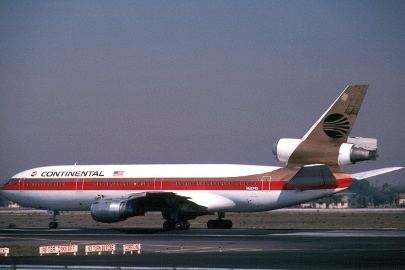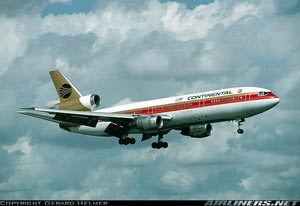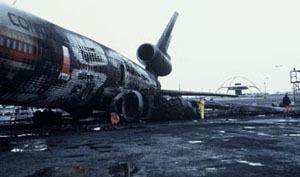Passengers 186 Fatalities 4 Date 1 March 1978 Injuries (nonfatal) 31 | Crew 14 Survivors 196 Number of deaths 4 | |
 | ||
Summary The left main landing gear collapsed during an aborted takeoff, after three tires failed on that gear Destination Honolulu International Airport Similar 1978 LAV HS 748 accident, Icelandic Airlines Flight 001, 1978 Iranian Chinook, 1978 Finnish Air Force DC, 1978 Balkan Bulgarian | ||
Continental Airlines Flight 603 was a scheduled McDonnell Douglas DC-10 flight between Los Angeles International Airport and Honolulu International Airport. On March 1, 1978, it crashed during an aborted takeoff, resulting in the deaths of four passengers.
Contents

Aircraft

The aircraft involved in the accident was a McDonnell Douglas DC-10-10, registered N68045, which had made its first flight in 1972.
Accident

The aircraft began its take-off from Los Angeles International Airport at approximately 9:25 am. During that take-off roll, the recapping tread of the No. 2 tire on the left main landing gear separated from the tire and the resulting overload caused that tire to blow out. That in turn, imposed an overload on the No. 1 tire on the same axle, resulting in a second blowout almost immediately after the first blowout. Shrapnel from the rims of the failed tires then damaged the No. 5 tire on the left main gear, causing it to also blow out.

Although the captain initiated the abort procedure at 4 knots (7.4 km/h; 4.6 mph) below V1 speed, it became apparent the plane could not stop within the confines of the runway. That was the direct result of the partial loss of braking power following the failure of the three tires on the left main gear, and also because the runway was wet. The captain directed the plane to go off the end of the right half of the runway in an effort "to go beside the stanchions holding the runway lights" and thus avoid a collision with the approach light stanchions, which were positioned immediately beyond the end of the runway. About 100 feet (30 m) beyond the end of the runway, the left main gear broke through the non-load bearing pavement, which caused it to fail rearward. Portions of the failed gear punctured fuel tanks in the left wing, immediately starting a fuel-fire on the left side.

The plane slid to a stop approximately 664 feet (202 m) beyond the departure end of the runway. Of the 186 passengers and 14 crew on board, two passengers were burned to death during evacuation. Moreover, 28 passengers and three crew members were seriously injured during the evacuation, of whom two died about three months later of their injuries. Because of rule 49 CFR 830.2, at the time, stated only deaths within seven days of the accident should be listed in the official National Transportation Safety Board (NTSB) report, it did not include those later fatalities.
Continental flight 603 was to be the last (retirement) flight of Captain Eugene Hersche.
NTSB findings

During its investigation, the NTSB found the #2 tire failed because it threw off its (recapped) tread. Then, the #1 tire failed because it was overloaded and had fatigue in its ply structure. Then, the #5 tire failed, because it was hit with shrapnel from the rim of either the #2 or the #1 tire. The failure of that third tire on the left main gear, probably contributed to the gear breaking through the non-load bearing pavement beyond the end of the runway, which in turn caused the gear to fail and puncture the fuel tanks. Additionally, the NTSB stated: "The tires on the aircraft may have been operated in the overdeflected condition, since the average inflation pressure was less than the optimum pressure for maximum gross weight."
The NTSB made recommendations to the Federal Aviation Administration (FAA), which included a prohibition of mounting on the same axle different models of tires which had different load-bearing characteristics and also that greater load-bearing characteristics be required in tires manufactured in the future.
After the investigation of this accident was completed, the FAA mandated changes to the design of evacuation slides to make them have more capacity and inflate at a quicker speed.
